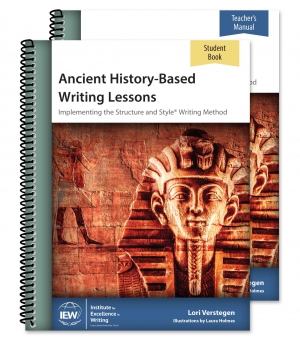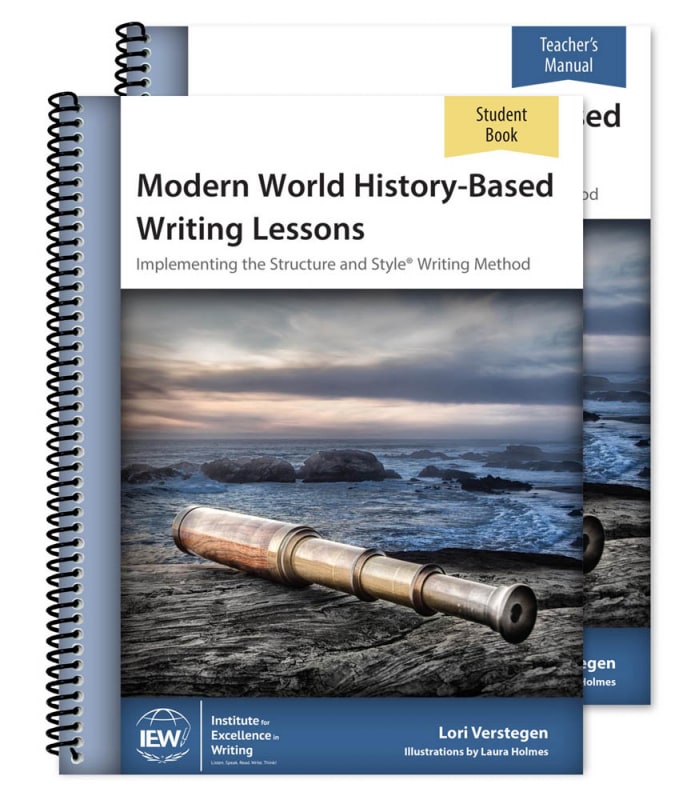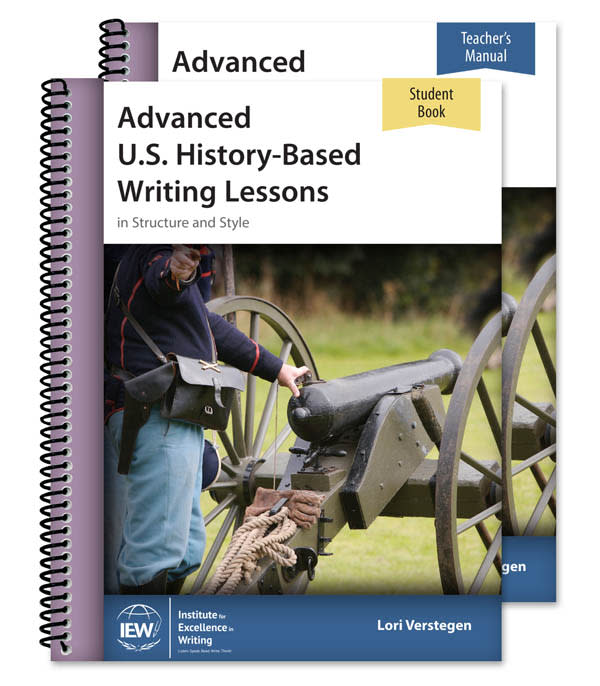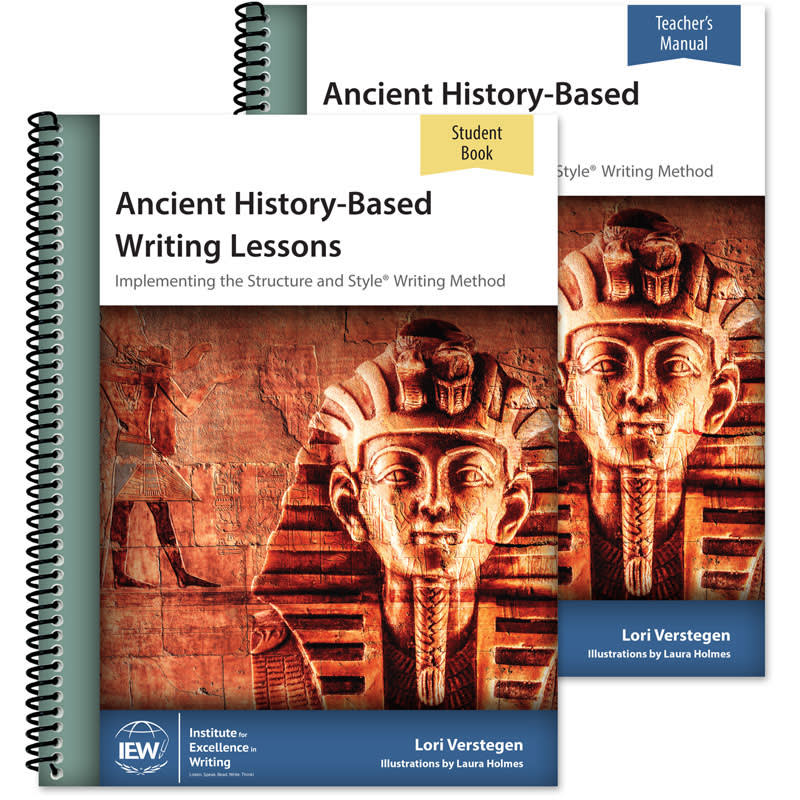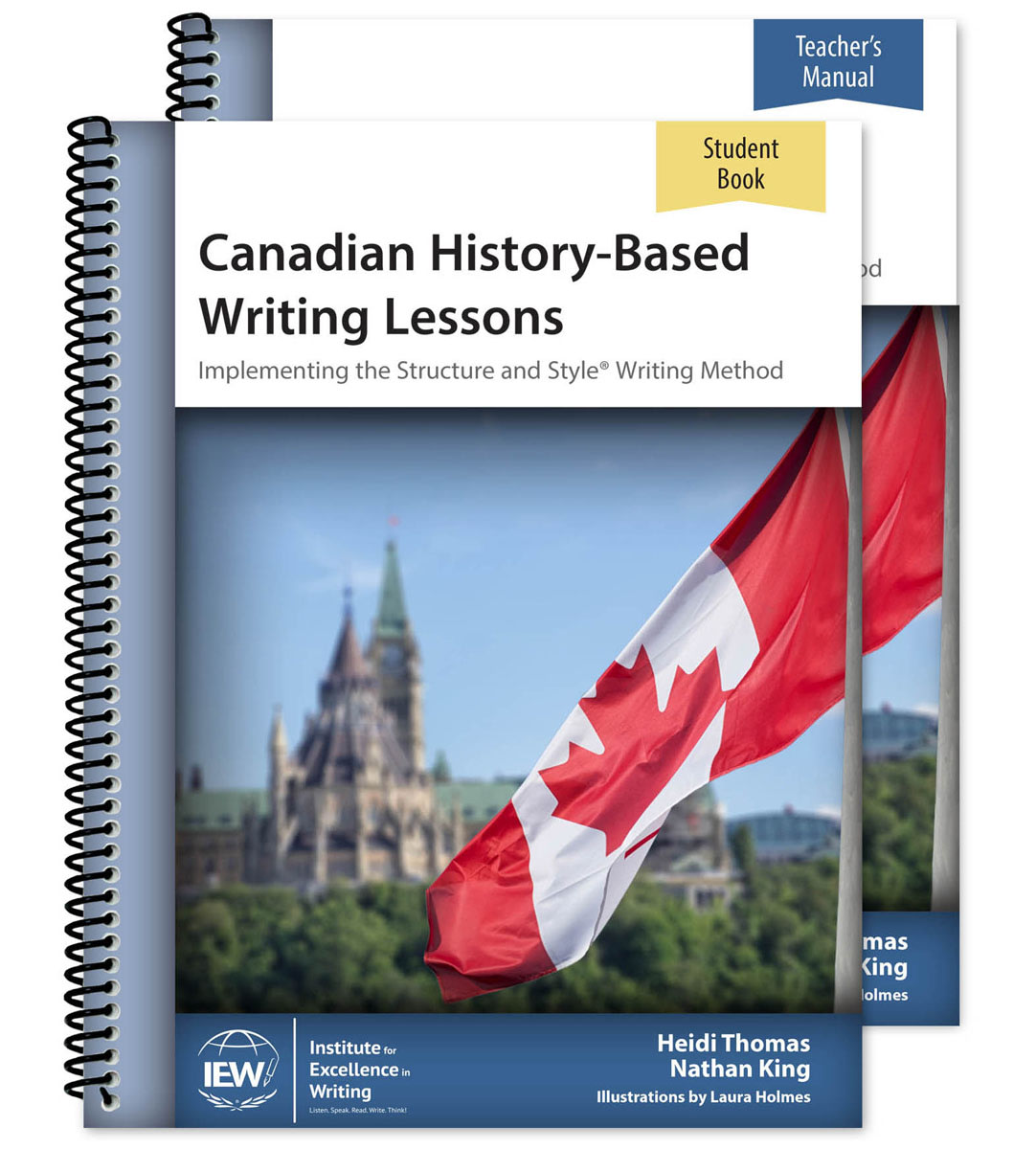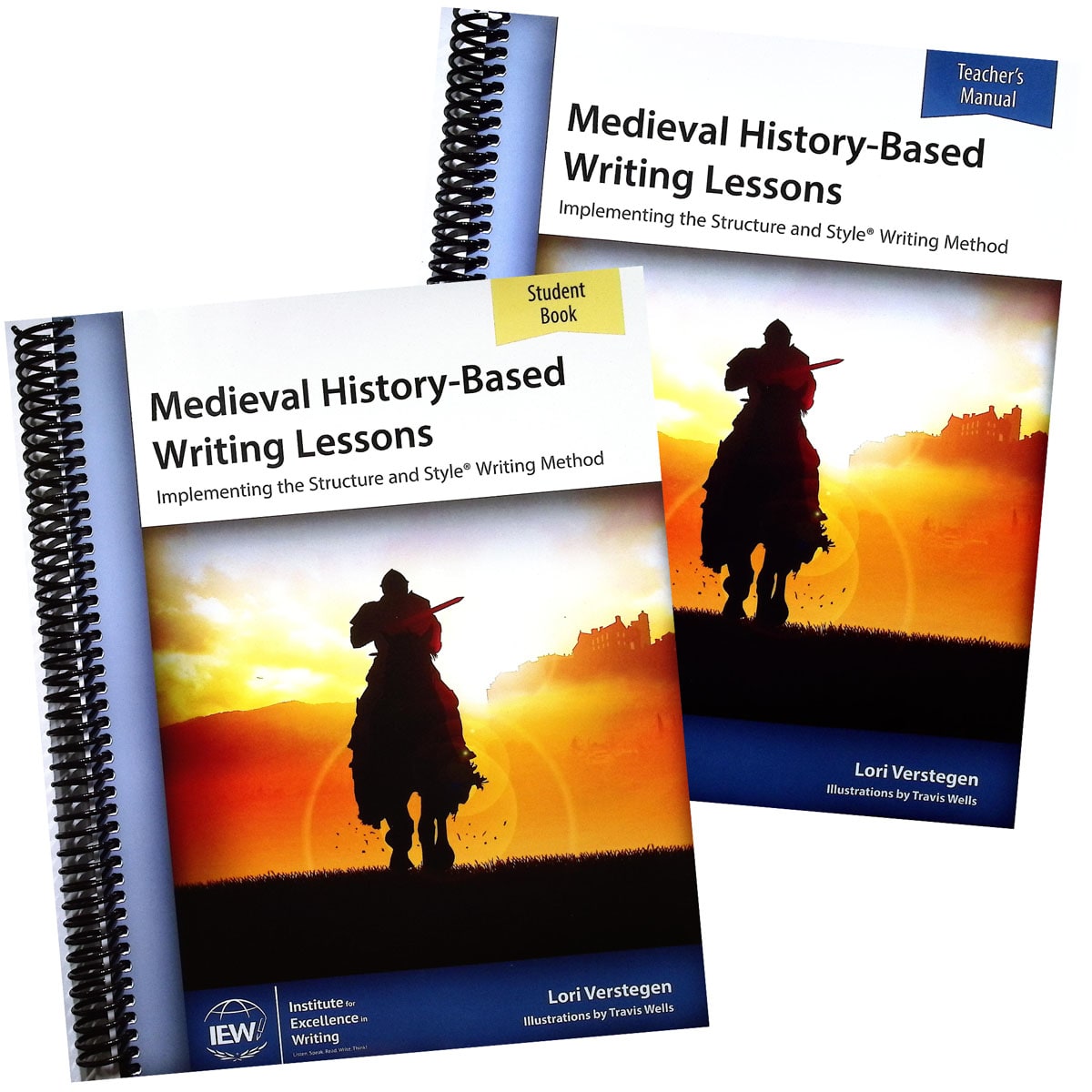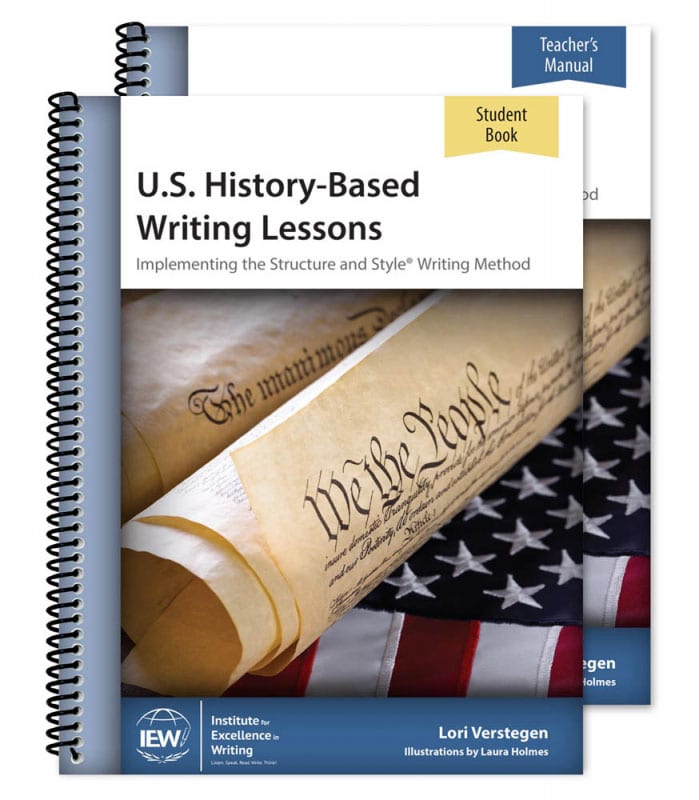Lori Verstegen has written a series of courses to implement IEW’s Structure and Style methodology within the study of history. Parents and teachers need to be familiar with the Structure and Style methodology before using these courses. Ideally, these history-based writing courses could be used alongside your history course material, but they are not dependent upon it. Topical lessons within each course address particular events or people with writing assignments that include source material for students to use. Because the lessons address a limited number of topics, history-based writing courses do not provide comprehensive coverage of a historical era.
Courses target different ranges of grade levels from about third grade through high school, but none of them stretch to cover all of those levels.
The courses available and grade levels for which they are appropriate are:
- Ancient History-Based Writing Lessons (grades 3-8)
- Medieval History-Based Writing Lessons (grades 6-8)
- U.S. History-Based Writing Lessons (grades 6-8)
- Advanced U.S. History-Based Writing Lessons (grades 9-12)
- Modern World History-Based Writing Lessons (grades 6-8)
IEW also sells Canadian History-Based Writing Lessons by Heidi Thomas and Nathan King, a course that is appropriate for grades six through eight.
Each course consists of a teacher’s manual and a student book. All books are spiral bound and printed in black and white. The teacher’s manuals include reproduced images of student pages (or sections of student pages) with suggested answers overprinted. Students will need a three-ring binder with page protectors in which they will place their polished drafts from each unit.
All courses include access to PDF downloads of supplemental resources that are pertinent to each course. These might include checklists, simplified source texts, advanced supplements for the lessons, or collections of student examples for the writing assignments.
The theme-based writing courses include a sizable collection of student resources that provide a reference tool and models of structures, style charts, descriptions of decorations, word lists, grammar rules, charts, checklists, and practice exercise pages.
Each course parallels the Structure and Style course layout with writing assignments incorporating elements taught in corresponding Structure and Style units. So lessons in the history-based writing lessons courses begin with Key Word Outlines then follow with Writing from Key Word Outlines, Retelling Narrative Stories, Summarizing a Reference, Writing From Pictures, Summarizing Multiple References, Inventive Writing, Formal Essay, and Critiques. While there is sometimes only one lesson on one of these skills, generally there are a number of lessons for each.
For example in Ancient History-Based Writing Lessons, the unit on Retelling Narrative Stories has four week-long lessons. In each lesson, students will work with a different source text (each about one page in length), working through the entire process. They will write a key word outline, then write a three-paragraph narrative from their outline. They will work on different aspects of writing the narrative each week. They will add different "dress-ups" (e.g., a who or which clause, an ly adverb, or strong verbs) to each narrative. And they will practice using new vocabulary words each week. Because each lesson revolves around a different writing skill, the structure of the lessons varies. All of the lessons break the writing process down into very manageable and structured steps that make it easy for children to learn to write well.
Each lesson after the first one begins with a brief review activity. Many of the review activities are presented as games, and instructions for the games are found in an appendix in each teacher's manual.
The student books each include a set of vocabulary cards at the back. You need to remove these pages from the book and cut the cards apart so that they can be used as directed. Students will study the vocabulary words and incorporate them into their writing assignments. Vocabulary quizzes are at the back of each student book. (You might want to remove these until they are needed.) Quizzes in the teacher’s manual have answers overprinted.
A checklist form (from the downloadable PDF supplements) should be used by students to check themselves to see that they have paid attention to structural elements and added the required elements of style for each assignment. Space for scoring assignments is included on these checklists.
Aside from Advanced U.S. History-Based Writing Lessons, the courses all recommended children's literature that can be read along with the lessons. The recommended books often relate to the historical themes addressed by the source texts included within the lessons. You do not have to purchase extra books for most of the courses.
Advanced U.S. History-Based Writing Lessons for high school differs somewhat from the other courses. It provides the writing and vocabulary components of a high-school-level English course, including writing research reports with MLA citations. It also requires that students read four books, although the study of those books doesn't suffice for the study of literature in one school year. The author recommends Janice Campbell's Excellence in Literature: American Literature course as the perfect complement to fill in the needed study of literature. Lesson plans in Advanced U.S. History-Based Writing Lessons tell when to use lessons in American Literature, making it easy for those wanting to use both courses. The four books used in this course are Uncle Tom's Cabin, To Kill a Mockingbird, The Gardener, and The Boy on the Wooden Box. Those adding Excellence in Literature: American Literature will also read The Last of the Mohicans, The Autobiography of Benjamin Franklin, Huckleberry Finn, and The Old Man and the Sea.
All of Verstegen's courses were originally written for co-op class settings, but they work well in all settings, even for one-on-one instruction. However, parent or teacher interaction is required, whatever the situation. You will probably find that older students who have previously worked through other IEW Structure and Style resources will be able to do much of their work independently.
The history-based writing lessons series expands opportunities to apply the Structure and Style methodology across the curriculum to improve writing skills, and it certainly will help students learn history as well.




